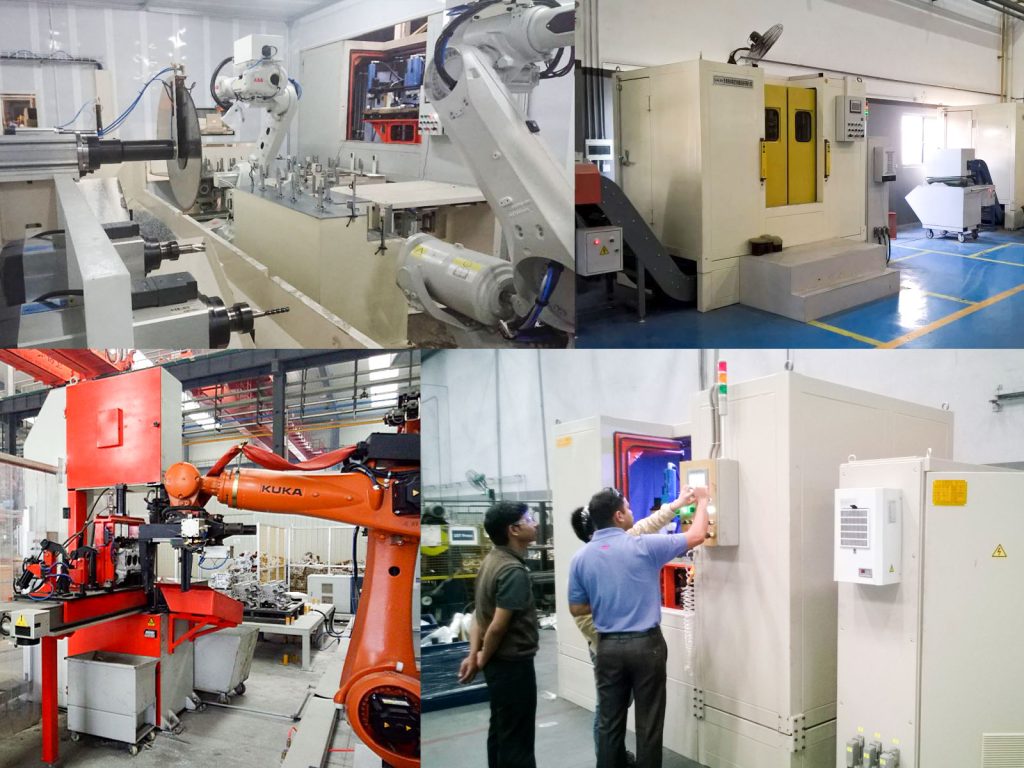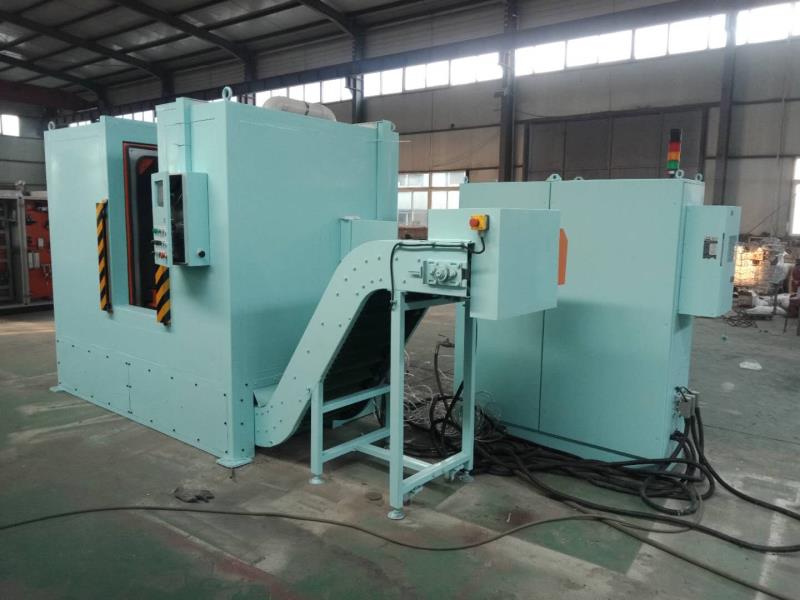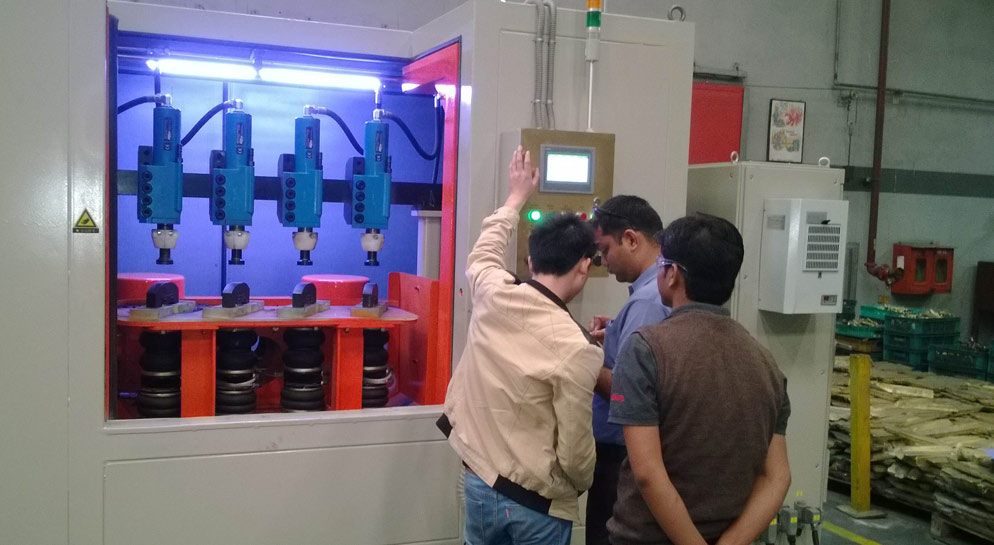A high-volume automotive manufacturing center with an annual output of more than 1 million cylinder heads must be separated from the casting system and from the casting core and sand before the cylinder heads can be machined. In most cases, this process is carried out in closed decoring stations.
The working process of the de-coring machine
The cylinder heads are sent in pairs from the foundry, and the first step in the process is to use robots to pick up and place the individual castings on transfer plates.
During operation: A typical code is automatically transmitted to the data block in the central plant control system in order to know at any time which cylinder head is placed on the plate.
The gating system is roughly knocked out manually with a decoring hammer. There is also a simple control panel at this manual station for entering type codes (only in the very rare case of omission).

Having removed the smaller gating residues and moving downstream of the degassing station, the cylinder head is placed in the correct position on the transfer plate of the alignment station.
The cylinder heads are then automatically distributed among the four decoring stations of the coring machine system. In principle, the design of the decoring stations is the same, however, each cylinder head has a specific structure, and each decoring station is characterized by a coupler connected to the cylinder head control.
Each airtight seal box has a shakeout station with a de-coring hammer to loosen the core sand inside the cylinder head. Finally, the complete unit including the plate and cylinder head is flipped and twisted in all directions. The unit shakes throughout the motion to allow the core sand to fall out. The result is that approximately 80 tons of sand accumulated in each decoring station per day is collected for reclamation. A belt conveyor at the exit of the de-coring machine transports the cylinder head, which is largely free of sand, to a transfer station, where two robots again perform high-precision positioning control: enter two separately controlled sawing stations to remove the sprue. As a double check, a video camera is installed to identify the cylinder head to prevent possible type entry errors at manual stations, or to prevent confusion in any downstream processes. Next step the surface of the cylinder head is ground in a parallel line and returns to its original starting position through the middle floor.

Decoring Machine
The casting Decoring Machine is an advanced structure, high-efficiency production of sand core removal equipment for non-ferrous metal castings. It is mainly used for cleaning sand cores of various aluminum alloy castings with complex cavities. Pump body, casing, and other castings.
More Detail: Decoring Machine, Guide to Decoring Systems of Castings
The structure of the operating steps of the four de-coring stations is the same. Its screens are custom-tailored to the operator’s view of the equipment. In addition, the operating status of the entire conveying equipment (automatic, manual, installation, and fault) is displayed, and there are a series of other very detailed displays for transportation in the de-coring station, and the de-coring hammer station.
In each decoring station, approximately 300 variables need to be processed. Operators understand the active plant components such as robots, conveyors, hydraulic cylinders, and decoring machines at a glance.
This operating principle is also applied to two additional cylinder head control stations located at both ends of the line. The entire transportation route is divided into five areas from the beginning to the end, including receiving, delegating, and alignment stations, which can be observed in detail. One of the stations receives data from the nearest decoring station via a transponder. An entry for the current quantity can also be seen in the equipment display of the cylinder head control station.
